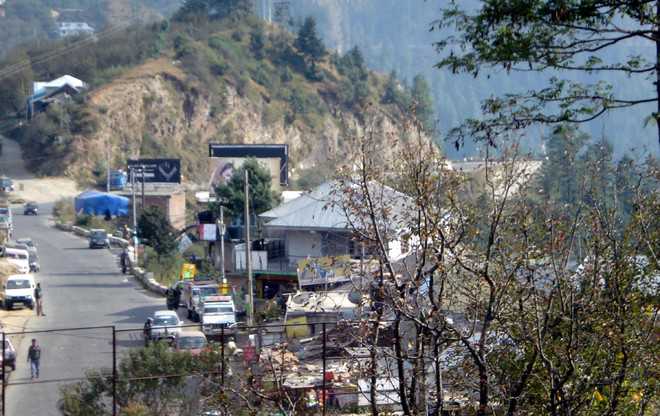I was in Government Senior Secondary School, Sandhu, to make students aware of the harms that cigarette and tobacco cause to people. My question, “How many of you smoke cigarette or beedi?” remained unanswered though the exchange of smiles among girl and boy students let the cat out of the bag. All attentive boys did not come forward for yet another reason. Dr Himender Bali, Principal, sat through my discourse with the children.
He impressed me with his knowledge and proactivity. He had raised a new block of the school building during his tenure of about three years from the money that the school orchard had earned. I had covered three schools in Theog, one in Matiana and a Navodaya, besides one at Sandhu because the Global Adult Tobacco Survey 2009-10 had disclosed that 19 per cent of the students in Himachal Pradesh indulge in smoking. Why is it that I am writing about Sandhu school.
It is because Sandhu is a popular surname in Punjab and a couple of Sandhus have brought laurels to India. Balwinder Sandhu was an Indian cricketer, Gurinder Sandhu, an NRI, played cricket for Australia and Emanuel Sandhu is a Canadian figure skater and dancer of Indian origin. There are many other Sandhus who make us feel proud of them. I asked quite a few people why the village had been named after a surname of Punjab but nobody could give me an answer.
Dr Bali, however, gave me a copy of their school magazine ‘Kanaageshwari’ that had an article on Sandhu by Brahm Dev Sharma Khadraik. I have made ample use of its content in acquainting the readers with Sandhu. But first, Kanaageshwari, is a temple of Devi on a hilltop between Theog and Sandhu. The Devi at Kanaag is the replica of Kaamaakshaa established at Kao in Karsog.
The temple on the hilltop was constructed by Prince Shamsher Chand (1892-1909) of Theog. Like Shikari Devi at Janjheli (Mandi), this Devi too does not want a roof over her head. She blesses the people from under the shadows of stars.I wanted to go to Kanaageshwari but could not go because I had to choose between the temple of this Devi or Chikhreshwar. I preferred the latter to the former because I had heard a lot about Him.
Sandhu in Theog is a small quiet village, 9 km away from Theog on the National Highway-5 (See photo). The Ministry of Road Transport and National Highways gave new numbers to the highways in 2010. All North-South-oriented highways were given even numbers increasing from the North to the South and all East-West-oriented highways would have odd numbers increasing from the East to the West. So, our NH-22 became NH-5.
Sandhu is the corrupt form of Sandhi, a word in Hindi, which means union, joint or junction. It also means treaty. Sandhu, therefore, meant a place where boundaries met. And here not only the boundaries of two princely states, Theog and Keonthal, met but also merged the areas of influence of their respective deities Chikhreshwar and Mananeshwar. About 500 years ago, the two princes of the states used to fight with each other over the boundary issue. Once they agreed to appoint a political agent and decided that his verdict would be acceptable to both. That was the time when water-flow system of justice was in vogue.
The political agent followed that recourse. He took water to the top of the disputed land in pitchers and spilled it there. The water naturally flowed down and drew a line of control among the two belligerent states. The flowing water distributed the land beyond Lafu Valley in favour of Keonthal and that beyond Pargana (a revenue division) Pajero was vested in Theog. The area of influence of the two deities was also decided accordingly. The justice had a smell of that saying from the Bible, “but let justice roll down like waters, and righteousness like an ever-flowing stream”. Both Rajas accepted this verdict and agreed to the tacit pact on territorial dispute. The place where the dispute got settled was named Sandhi or Sandhu.
Unlock Exclusive Insights with The Tribune Premium
Take your experience further with Premium access.
Thought-provoking Opinions, Expert Analysis, In-depth Insights and other Member Only Benefits
Already a Member? Sign In Now










